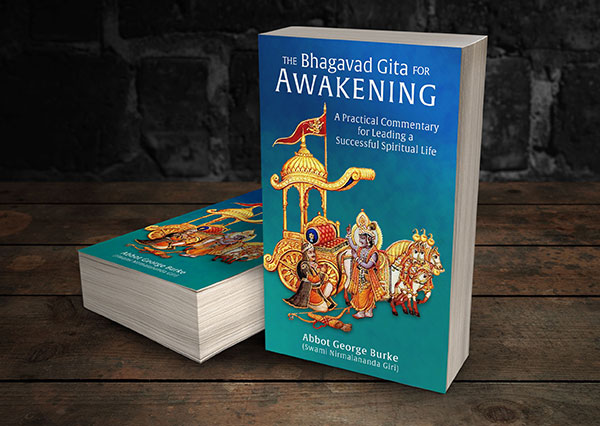
“Thinking about sense-objects will attach you to sense-objects; grow attached, and you become addicted; thwart your addiction, it turns to anger; be angry, and you confuse your mind; confuse your mind, you forget the lesson of experience; forget experience, you lose discrimination; lose discrimination, and you miss life’s only purpose.”
–Bhagavad Gita 2:62, 63
It is true that the journey of a thousand miles begins with the first step. In these two verses Krishna has described the entire journey, beginning with thought and ending in total loss. Each step should be considered well.
Thinking
Thought is power–magnetic power, particularly. That is, thought can draw or repel whatever is thought about, depending upon the polarity of the individual mind. Many times we see that people bring to themselves the things they continually think about, but we also see that thinking about something can repel it from the person.
For example, the Franciscan Order is almost obsessed with the idea of poverty, yet it is one of the wealthiest institutions in the world. Thinking about poverty brought them wealth! This is not said in jest. I have seen people draw to themselves the things they detested, and seen others drive out of their lives the things they yearned for. As already pointed out, it is a matter of the polarity of the thought force, of magnetic energy.
As a rule, though, thought brings to us what we think about. Even if we begin by disliking or opposing the object of thought, in time we become attached to it, either by coming to like it (whether or not we admit the liking) or becoming unable to dispel it from our minds. We see this in the lives of many crusaders. They become what they oppose. In fact, they often oppose something to cover up their secret attraction to it.
It has long been known that the opposite of love is not hate, but indifference. Krishna is aware of this, and is counseling Arjuna to simply ignore that which he does not wish to become involved with. That is why in meditation we ignore any distractions and just keep relaxed in the awareness of the process of meditation–and nothing else. If we do this, in time the distractions will dissolve, and in the meantime, being ignored, they will not be distractions, practically speaking.
So if we will not obsess on a subject, it will not touch or capture us. This is a major point of spiritual life.
Attachment
- “Thinking about sense-objects will attach you to sense-objects.”
The word translated “attach” is sangas, which means attachment. However, sangas has both an internal and an external meaning–both of which apply in this instance.
Attachment means having an affinity for something, or having some feeling of desire to be aware of it or have it present. It has a definite emotional connotation. It also means to feel some kind of kinship with an object, or to feel a need for it–even a dependency.











